Rules and scheme for planting blueberries in the fall

Blueberries are a popular shrub that, with proper care, delights with very healthy berries. In this article, we will consider in more detail the rules and scheme for planting blueberries in the fall at their summer cottage in open ground, with what fertilizers to plant them, how to carry out subsequent care.
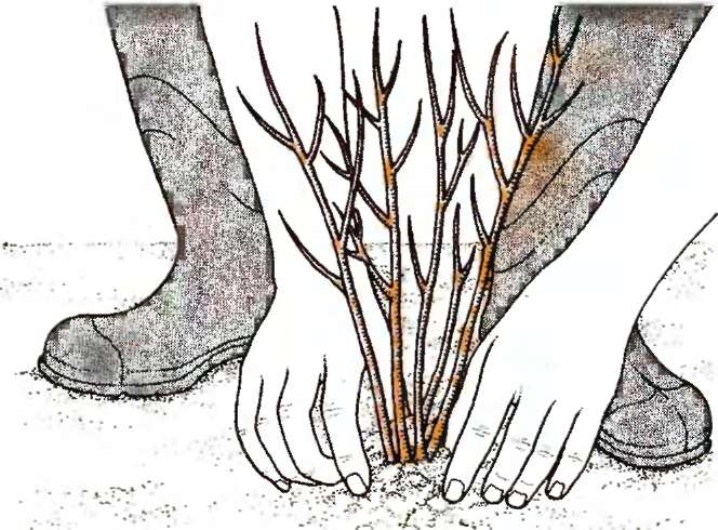
Fundamental rules
Blueberries can be planted both in autumn and in spring, and some gardeners plant even in summer, but blueberries must have a closed root system.
The following features of the autumn planting of blueberries should be taken into account:
- if we consider the autumn planting of blueberries, then it should be grown in pots;
- if one-year-old seedlings are used for planting, then it is imperative to prune their shoots; first, a plant is planted, then all broken or weak branches are cut off, but the strongest shoots can be cut in half;
- it is advisable to cover the blueberries for the winter with spruce branches or non-woven material in order to increase the winter hardiness of the shrub; if you just cover the plants with material, then this will not bring the desired result, you need to make a small support in the form of a box or an arc, and then lay the covering material on it.
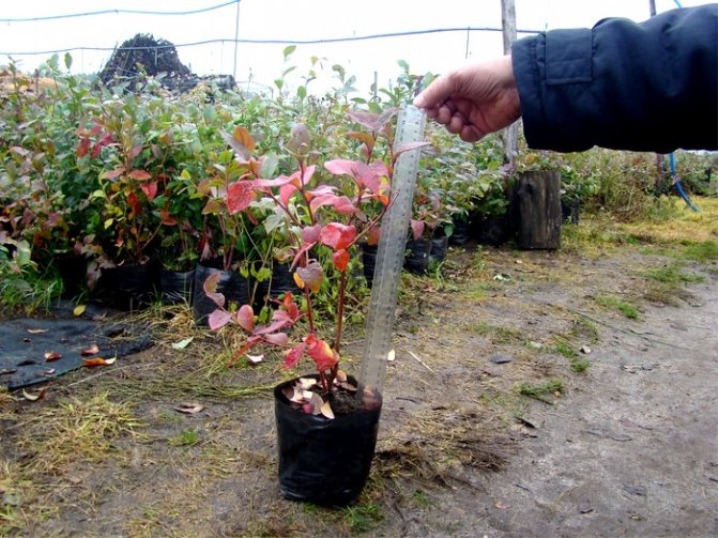
If you adhere to the deadlines and all the rules for planting blueberries, then in 2-3 years it will be possible to harvest the first harvest. Planting time primarily depends on the characteristics of the plant itself, some varieties have a trunk, the length of which can reach up to 1.2 meters in height.
Many gardeners prefer to plant blueberries in September, as this is the best time for the plant to take root before frost.
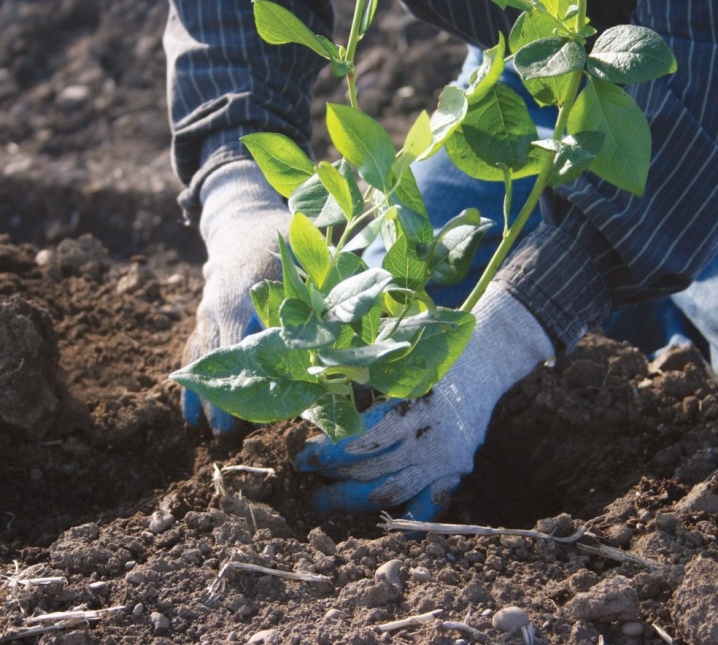
Preparation
Initially, you should pay attention to the preparatory steps. It is necessary to calculate how long it will take for the shrub to take root before the onset of the first frost. In the autumn month, a seedling is planted, which was grown from an adult bush during the winter period, or a seedling that was in a flowerpot. Let us consider in more detail what points should be included in the preparation of seedlings before planting in an open area, for example, in the country.

Choosing a place and a seedling
Choosing the right place for landing is half the battle. Plants should be in a sunny and warm place, then its berries will be juicy and sweet. In addition, drafts should be avoided. In shaded areas, blueberries produce very sour and low yields. The ideal solution would be a sunny place, near which there is a hedge.
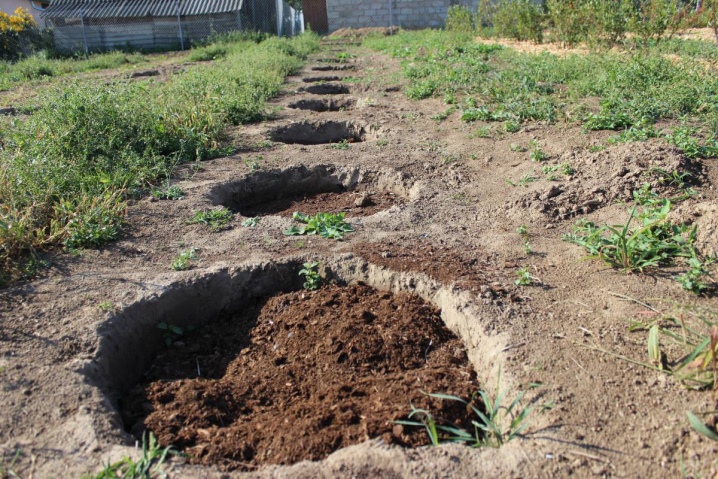
If you decide to plant garden blueberries, then it is better to give preference to loose soil, for example, peat-loamy or peat-sandy, because it contains a lot of nitrogen. But in this case, the plant needs good shelter for the winter season, and in the spring the snow will melt longer. It is desirable that the groundwater flows as deep as possible. If there is no suitable land for planting, then you can prepare it yourself by combining peat, sand and loamy soil. If there is a little organic matter in the soil, then you need to add complex mineral fertilizers, which include potassium, phosphorus and nitrogen.
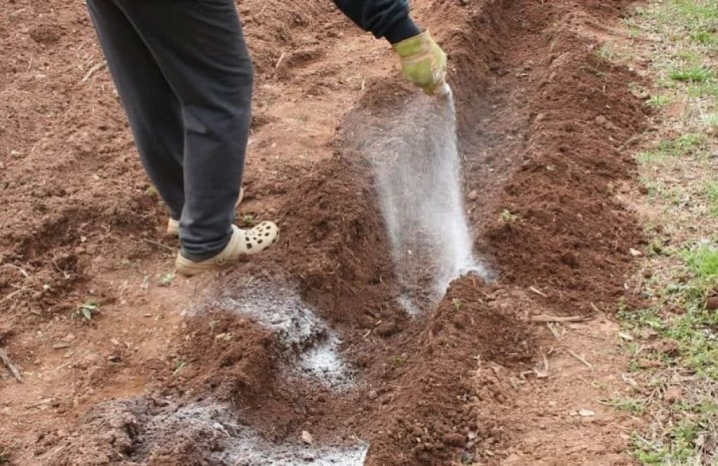
It is necessary to choose the right seedlings, while taking into account the peculiarities of the climate and the timing of fruit ripening. It is very important to initially choose the right variety. Canada's low-growing varieties are ideal for cool climates, but garden blueberries thrive in regions with hot, long summers.
It is recommended to purchase planting material in specialized stores or nurseries. The quality of the seedling will affect the further survival rate of the shrub. You should not buy a plant that has open roots. They should be in the ground in any container. Further, the bush with earth is lowered into the water for 15 minutes, the roots are straightened already in the hole itself.
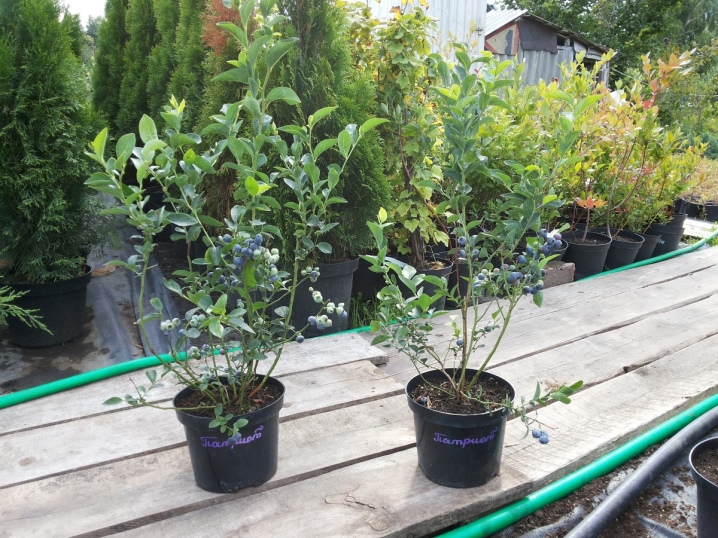
Landing pit
For planting, you first need to prepare a hole. It should be both in depth and in width about 40-60 cm. The optimal size is 50x50 cm. Because blueberry roots like to grow wide, some growers prefer to pits up to 80–90 cm.
If it is necessary to fence off the soil from the planting hole from the garden soil, then geotextiles should be laid on the bottom, and sides made of slate, brick, stone or wood should be built around. Such artificial isolation will protect the root system from the garden soil.
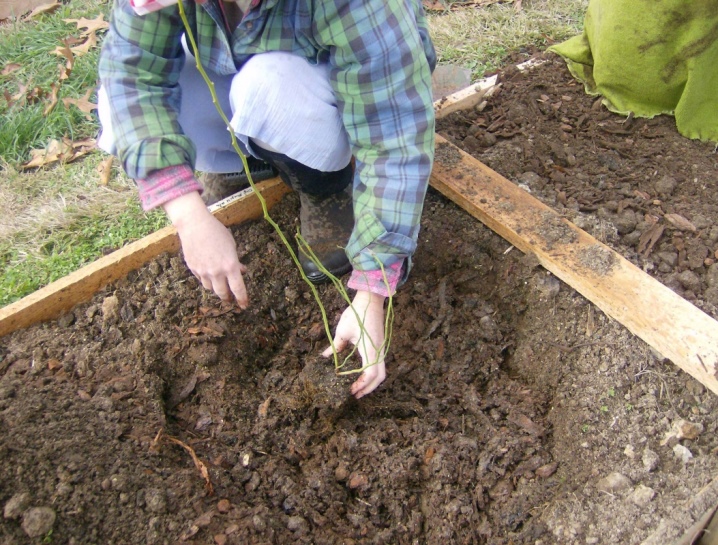
Before planting at the bottom of the pit, you need to place a drainage layer 10–20 cm high, after which you can add a nutrient mixture for growing blueberries. In the form of drainage, you can take coniferous bark or chips. It is strictly forbidden to use chalk or limestone crushed stone, as they reduce the acidity of the earth.
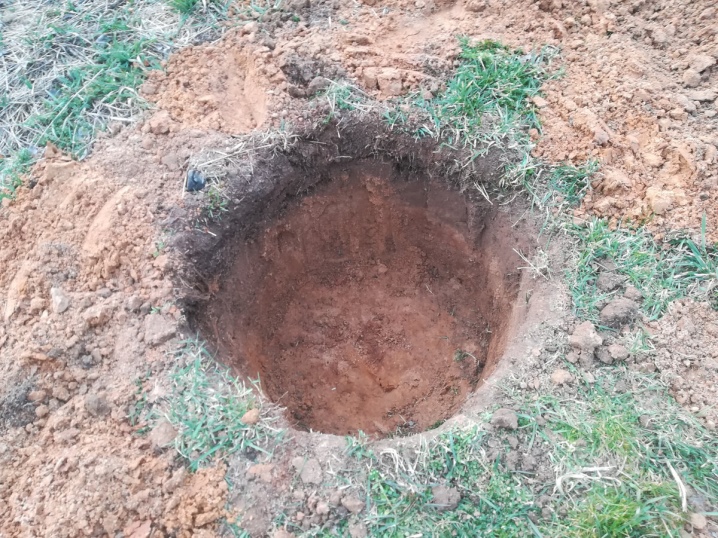
Landing schemes and technology
The technology of planting blueberry bushes is not much different from planting other crops, but there are still differences. Since blueberries thrive in light and acidic soil containing organic matter, they should be used during planting with transitional or high-moor peat. But if it is not there, then other technologies can be used.
No peat
You need to dig a planting hole, fill it with garden soil, but before that mix it with a special powdery agent containing sulfur, then the acidity of the soil will increase. When it rains, the powder dissolves, thereby increasing the acidity level. You can use oxalic or citric acid by first dissolving 1 teaspoon in three liters of water. Some gardeners prefer 9% vinegar: they take 100 ml per 1 liter of water.
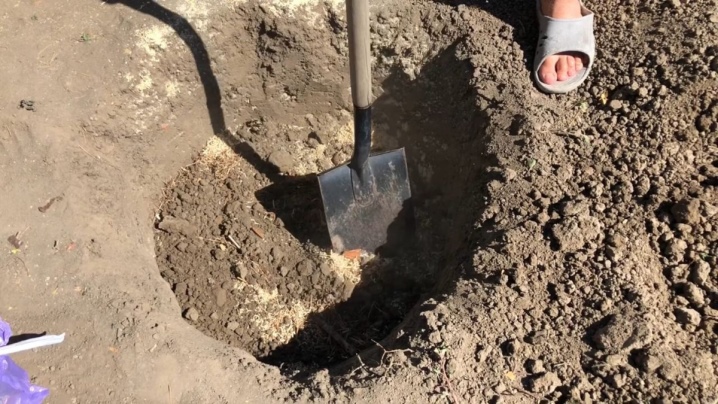
The above formulations are suitable for watering blueberry bushes only twice a year: in early spring and late autumn.
Into the ridges
If there is clay soil on the site, then it is recommended to land on the ridges. This option includes the following sequence of actions:
- make a landing hole 15 cm deep;
- form a hill from soil, sawdust, peat and sand;
- place a seedling in the center of the elevation.
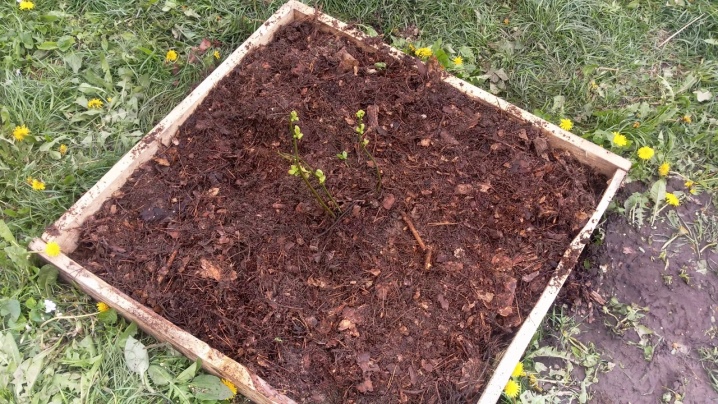
This option ensures that the root system is flush with the ground, thereby allowing excess moisture to escape between the rows. Further around the stem, it will be necessary to lay a layer of sawdust, its height can vary from 8 to 12 cm.
Planting in needles
If peat is absent, then a substrate of needles is an excellent alternative, which includes, in addition to rotted needles, forest land from under coniferous trees and garden soil. The resulting soil is characterized by increased looseness, air enters the ground better and the survival rate of the seedling increases.
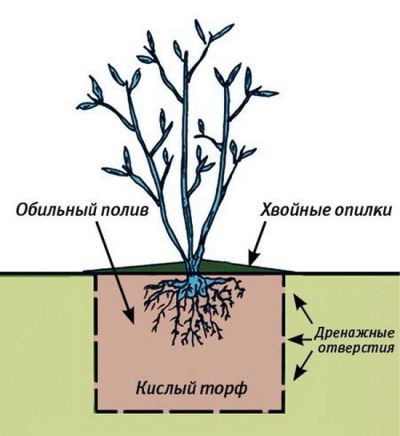
In bags
Quite often, in cramped conditions, blueberries are grown in plastic containers or bags. In this case, there are practically no costs for the soil mixture, there are no weeds, there is no need to hilling, and the harvest is quite easy to harvest. Bags or soft containers are filled with soil with a high acidity level or peat.
If the decision is made to plant blueberries in the fall, pick a day in the first half of October. The plant has about one month left to take root and be ready to withstand the first frosts. The acidity level of the soil should be between 3.5 and 4.8 units. It is such a soil that will ensure active development and abundant fruiting.
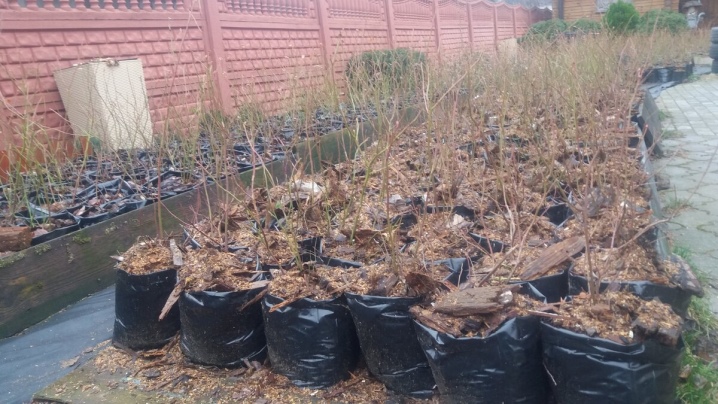
It is worth noting that blueberries do not have root hairs that allow it to absorb moisture and minerals from the soil.But with the help of fungi, which prefer acidic soil, the plant receives all the necessary nutrients.
In addition, the presence of fungi makes blueberries more resistant to various infections. When transplanting, it is very important to preserve the integrity of the mushroom mycorrhiza, so it is better not to touch the earthen lump.
But seedlings that have open roots have a low survival rate, and the reason is the absence of mycorrhiza. Therefore, experienced gardeners recommend planting plants with soil or in a container.
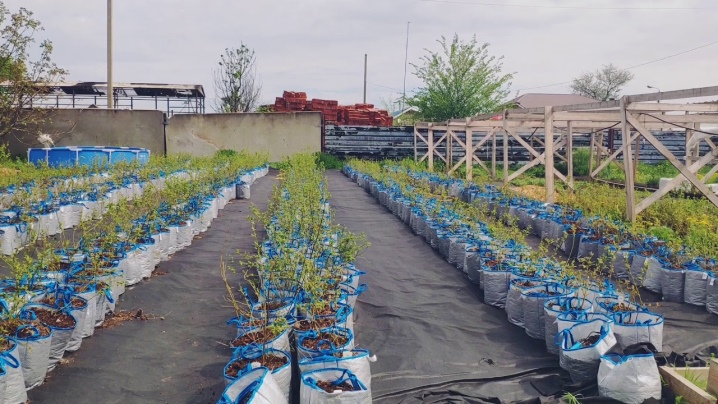
Planting blueberries in autumn is carried out according to the following algorithm of actions:
- The bottom of the hole should be laid with a special drainage of small stones, broken brick or slate, such a layer will prevent root rotting in wet soil.
- The seedling is placed in the center of the hole, then the roots are straightened, the root collar is placed about 7 cm below ground level.
- For irrigation, use ordinary water or a special composition to stimulate the growth of the root system.
- Then the plant is covered with prepared soil mixture and compacted.
- If you cut off the top of the seedling, then the side branches will actively grow.
- For mulching a seedling, peat, needles sawdust, oak leaves are used, the mulch layer should be from 10 cm.
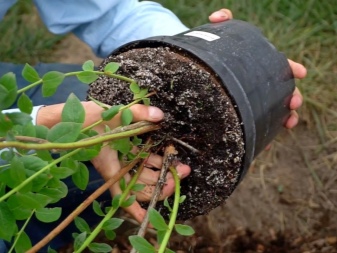

The autumn planting of blueberries is carried out in almost the same way as the spring planting. The difference is that in the fall of a plant of the first year, you need to cut off all weak branches, as well as shorten the strong ones in half. And for plants from two years old, pruning is no longer needed before wintering.
Follow-up care
If we compare the care of blueberries after planting in the fall and spring, then it is during the autumn planting that you will have to look after much less. More energy is expended during care after spring planting. For autumn seedlings, it is very important to pay attention to watering and feeding.
During the adaptation period, plants should be watered frequently, as they need moderately moist soil. Of course, the weather has a big impact on the irrigation system. Watering should not be done frequently on cloudy days to avoid root rot. During dry weather, blueberries need daily watering, and 10 liters are required for each bush.
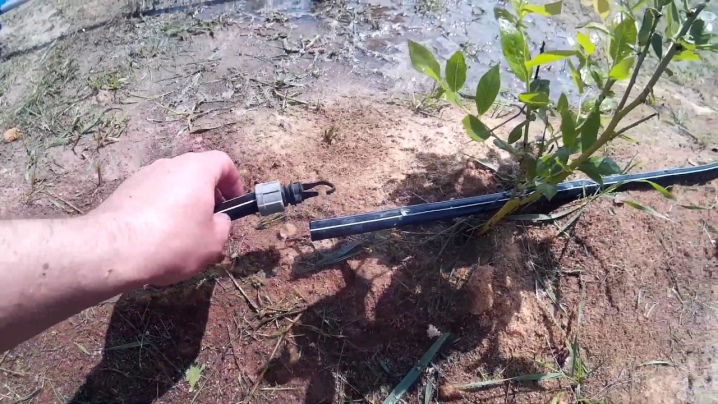
If the plant is deficient in minerals, it needs to be fed. Potassium sulfate or potassium nitrate can be used as fertilizer. You need to add the granules to the soil and dig up. But nitrogen-containing mixtures can be used only in spring, and in autumn they must be discarded.

After planting blueberries in the fall, the following care measures are necessary:
- produce stable and plentiful watering - moisture accumulates and will provide the plant with everything it needs during the winter;
- after the plant, it is recommended to mulch, this stage will help to preserve not only moisture in the ground, but also heat, thereby protecting the roots from freezing;
- soil acidification is carried out only in warm autumn, otherwise this action is transferred to spring;
- every autumn, the bushes should be pruned, then in the spring they will grow quite actively.
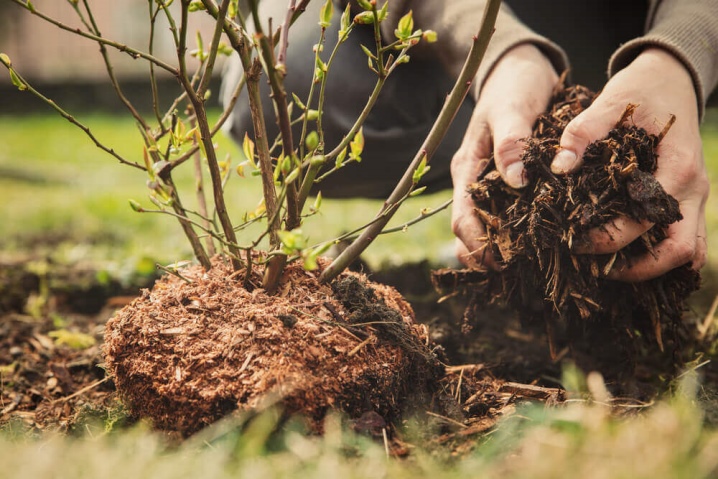
At low air temperatures, blueberries need shelter. It is recommended to use a dense material, but which is excellent for air permeability, thereby preventing rotting of the root system. Burlap or agrofibre is an excellent choice.
It is recommended to tie each plant separately, tie with nylon threads and supplement with oppression. If the temperature drops below 0 degrees, it is recommended to make a snow cover on top of the shelter to protect the plants from freezing.
Already in the spring, the snow will need to be removed before the melting period, and when the temperature is above 0 degrees, all materials can be removed.
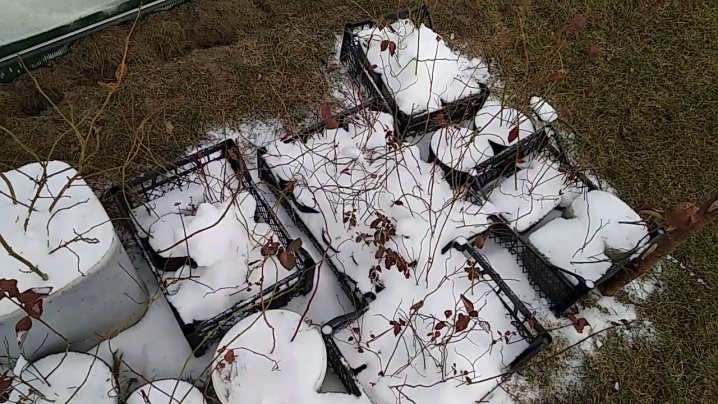













The comment was sent successfully.